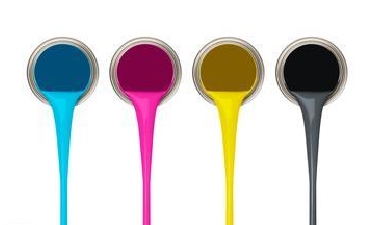 It's commonly known that paint can be harmful to human health. But do you really understand the dangers it poses? Let’s take a closer look at the risks associated with paint exposure.
First, the toxicity of organic solvents is one of the most significant concerns. Prolonged inhalation of their vapors can lead to chronic poisoning, while short-term exposure to high concentrations may cause acute effects. The level of risk depends on the solvent’s volatility and how easily it can be absorbed by the body. Some solvents are more fat-soluble, reactive, or contain impurities, which can increase their harmful impact. Factors such as individual sensitivity, metabolic rate, and the duration of exposure also play a role in determining the severity of the effects.
When it comes to pregnant women, the dangers are even more serious. Paint exposure can lead to skin allergies, which might affect both the mother and the developing baby. Some components, like benzene, can cause hemolysis—breaking down red blood cells—which can be harmful to both the mother and fetus. Lead, another common ingredient, can enter the body through the skin or respiratory system, leading to long-term poisoning that affects the nervous system of both the mother and child.
During the first trimester of pregnancy, exposure to harmful substances in paint can cause serious developmental issues. These include birth defects such as cleft lip and palate, and in severe cases, brain development problems. Formaldehyde and benzene, often found in paint, are particularly dangerous for the fetus, increasing the risk of malformations.
Formaldehyde is especially concerning, even though it isn't the main component of paint. It is often added to preserve the quality and enhance the finish of the paint. However, formaldehyde is highly irritating to the skin and mucous membranes. Once inside the body, it can bind with proteins and damage the retina, causing long-term eye damage. Its presence in paint should not be overlooked, as it poses serious health risks.
In summary, while paint is widely used, its harmful components can have lasting effects on human health, especially for vulnerable groups like pregnant women and children. Awareness and proper precautions are essential when working with or around paint products.
It's commonly known that paint can be harmful to human health. But do you really understand the dangers it poses? Let’s take a closer look at the risks associated with paint exposure.
First, the toxicity of organic solvents is one of the most significant concerns. Prolonged inhalation of their vapors can lead to chronic poisoning, while short-term exposure to high concentrations may cause acute effects. The level of risk depends on the solvent’s volatility and how easily it can be absorbed by the body. Some solvents are more fat-soluble, reactive, or contain impurities, which can increase their harmful impact. Factors such as individual sensitivity, metabolic rate, and the duration of exposure also play a role in determining the severity of the effects.
When it comes to pregnant women, the dangers are even more serious. Paint exposure can lead to skin allergies, which might affect both the mother and the developing baby. Some components, like benzene, can cause hemolysis—breaking down red blood cells—which can be harmful to both the mother and fetus. Lead, another common ingredient, can enter the body through the skin or respiratory system, leading to long-term poisoning that affects the nervous system of both the mother and child.
During the first trimester of pregnancy, exposure to harmful substances in paint can cause serious developmental issues. These include birth defects such as cleft lip and palate, and in severe cases, brain development problems. Formaldehyde and benzene, often found in paint, are particularly dangerous for the fetus, increasing the risk of malformations.
Formaldehyde is especially concerning, even though it isn't the main component of paint. It is often added to preserve the quality and enhance the finish of the paint. However, formaldehyde is highly irritating to the skin and mucous membranes. Once inside the body, it can bind with proteins and damage the retina, causing long-term eye damage. Its presence in paint should not be overlooked, as it poses serious health risks.
In summary, while paint is widely used, its harmful components can have lasting effects on human health, especially for vulnerable groups like pregnant women and children. Awareness and proper precautions are essential when working with or around paint products.The micro peristaltic pump is suitable for many general fields such as laboratories, pharmaceutical industry, fine chemicals, water treatment, environmental protection engineering, food and beverage production dosage additives, acid supplementation and alkali defoaming in technological fermentation systems, scientific experiments, etc. The mini peristaltic pump is pollution-free, the liquid only touches the pump tube, the transmission accuracy is high, and it is easy to clean. It can work again only by replacing the pump tube.
Laboratory peristaltic pump,micro peristaltic pump,mini peristaltic pump,small peristaltic pump,medical peristaltic pump
Changzhou Yuanwang Fluid Technology Co., Ltd. , https://www.ywfluid.com